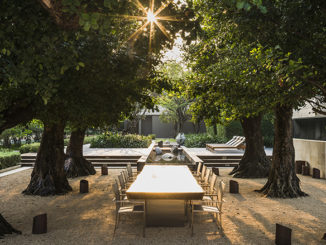Winner of the 2021 WLA Awards – Award of Excellence – Conceptual Design
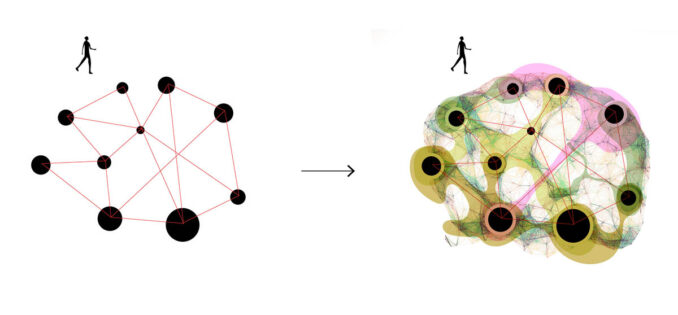
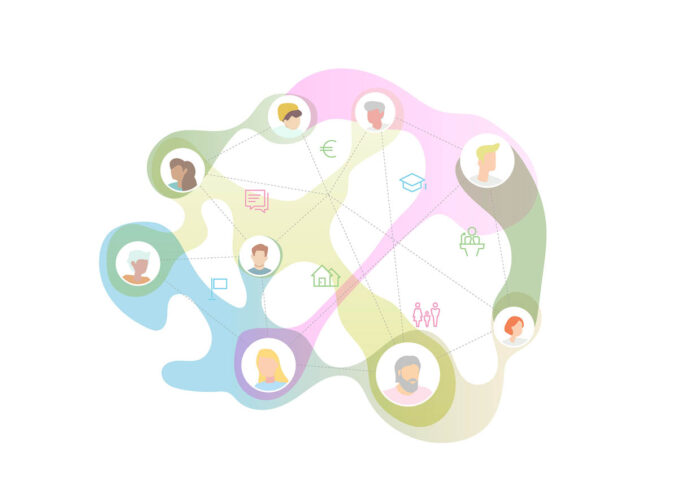
Walking has great potential. It may not be the fastest, and as some may say not the most comfortable way to get around, but it is the only type of movement which doesn’t require a vehicle. By walking more, we limit the influence of our movements on the environment. As a result, creating room for walking frees up space in the city, which can be used to tackle diverse social and environmental challenges. Oddly enough, the pedestrian is often forgotten in the design of our public spaces. This research project provides insight into the potential benefits of walking, and identifies the design tasks within our built environment to realize these benefits.
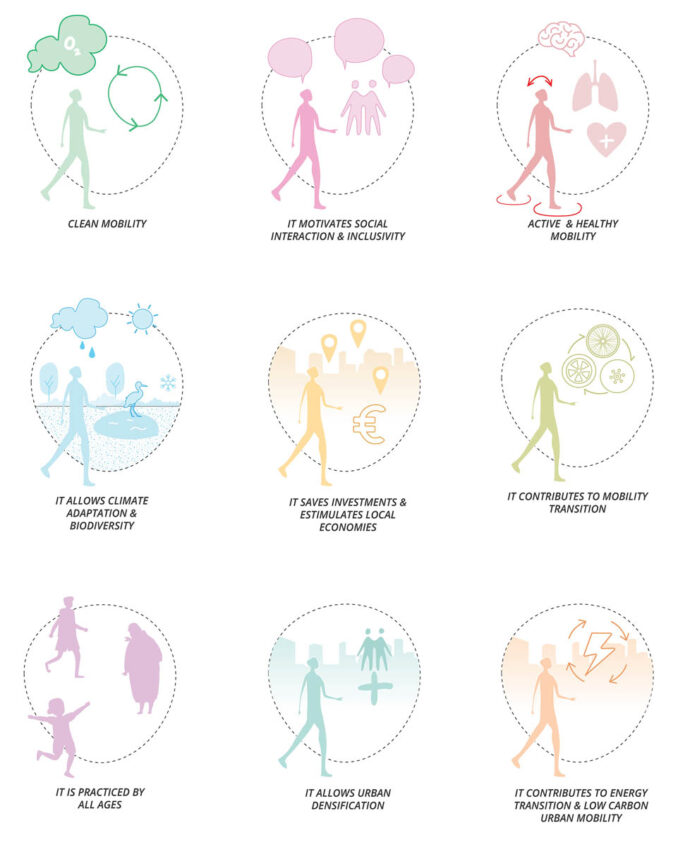
The Walkable City
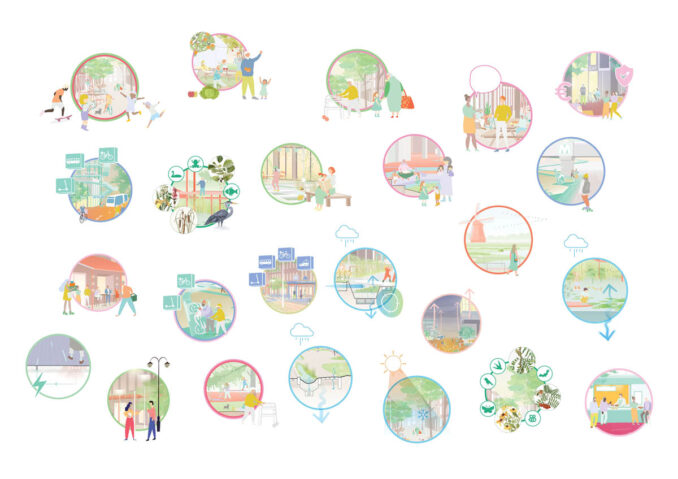
The 20th century was without a doubt the century of the automobile. Mass production of cars had revolutionized mobility and represented a milestone in the democratization of transport. The pursuit of speed and individual freedom has led to a spatial layout that follows the logic of the car. This legacy is still visible in our urban environment today. Cities are still largely organized to get from A to B as quickly and efficiently as possible. The research proposes a method to transform an infrastructure network into a functional experiential landscape. A walkable city where the journey is as important as the destination, recognizes local streets, green-blue networks, neighborhood services and amenities, schools, urban plazas, and public transport stations as the structural elements for a walking operational journey, rather than limiting the walking realm to sidewalks parallel to car infrastructure.
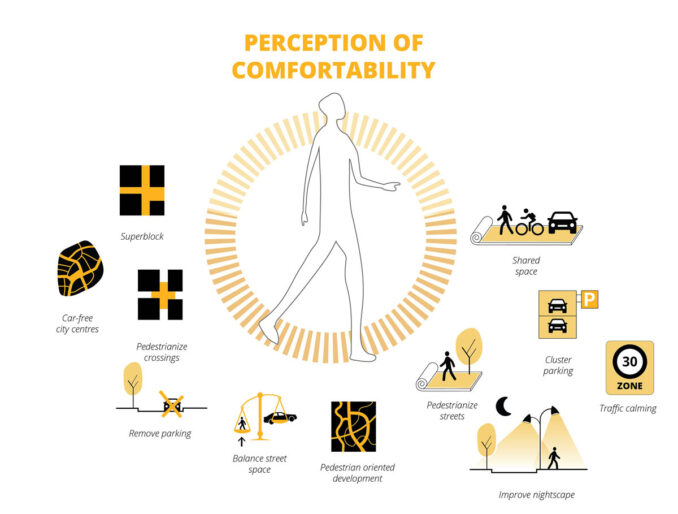
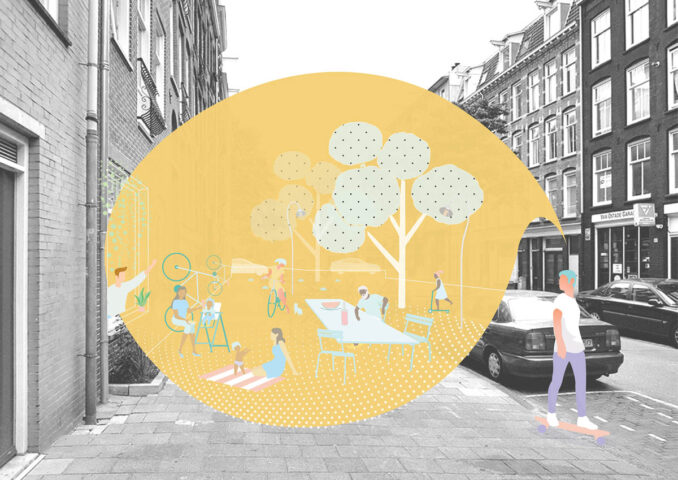
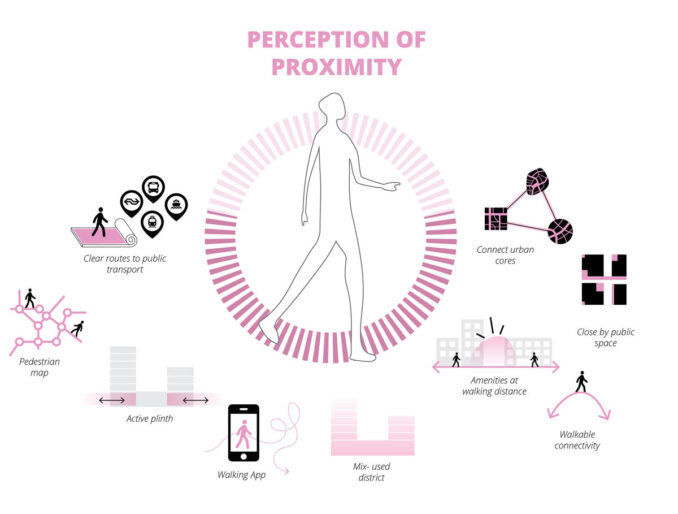
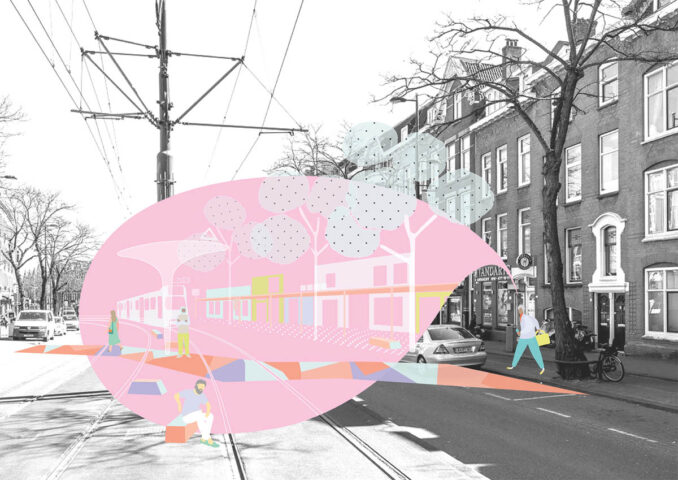
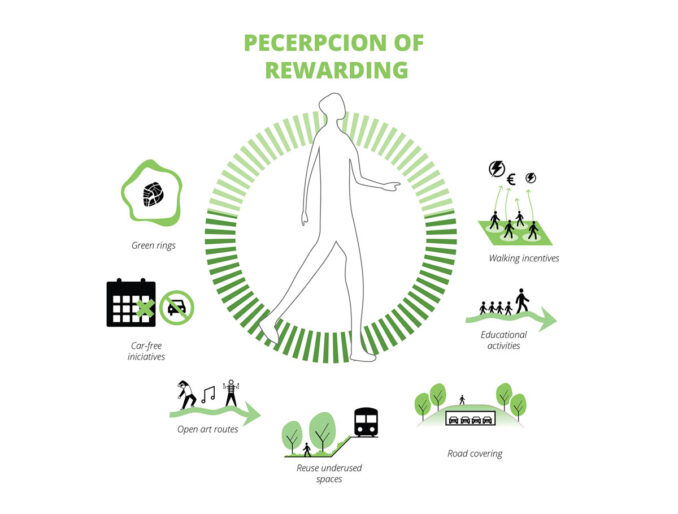
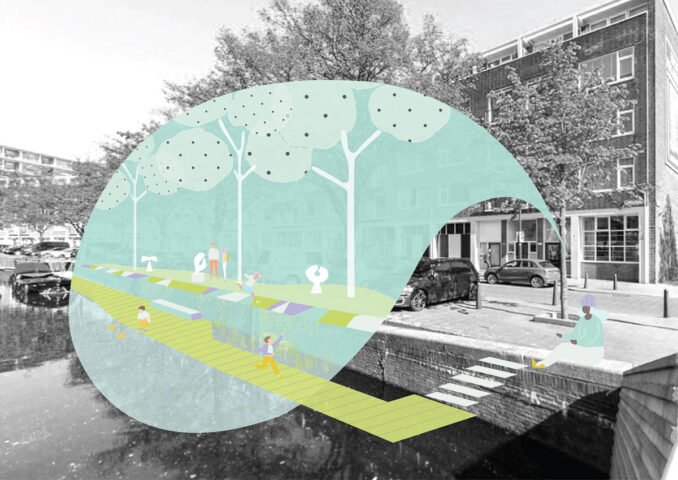
Walking With Covid-19
In a timeframe of changing mobility, walking can act as a catalyst to realize various governmental agendas. Strategies for climate adaptation, emission reduction, safety, densification and population growth can be linked in the space that is freed up by the increase of walking. Under the burden of the current global pandemic, cities around the world could benefit from walking as a catalyst for the organization of their public space. The measures to counter the spread of the corona virus have changed our daily lives. Many people started working from home and now move mostly within their own neighborhood, either on foot or by bicycle. As a result of this change, people are valuing green in their direct environment more and more. In a walkable city human scale is normative, physical activity is stimulated and space for social interaction is created. The walkable city shares a design brief with that of a sustainable and healthy city that can help improve the health, climate adaptation and social inclusivity within our cities.
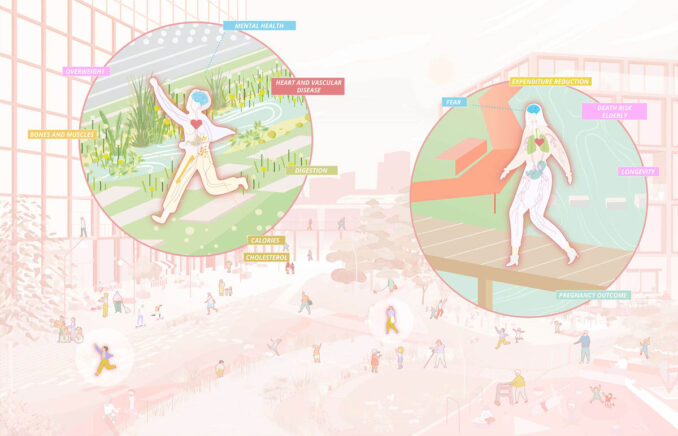
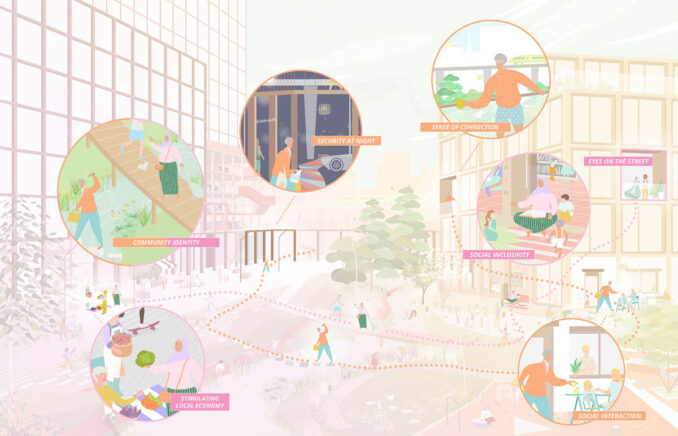
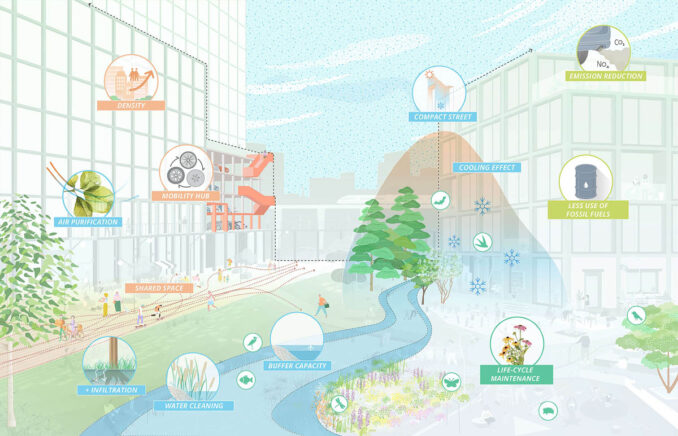
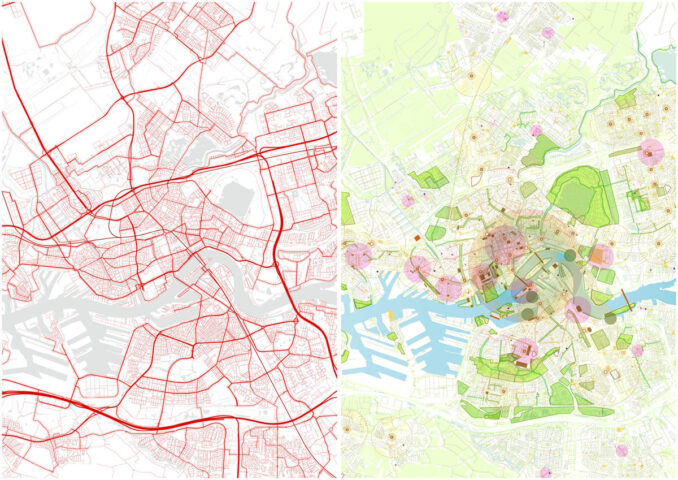
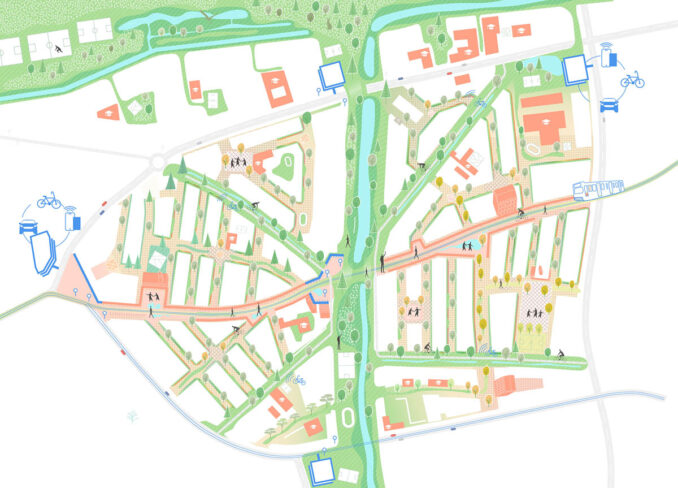
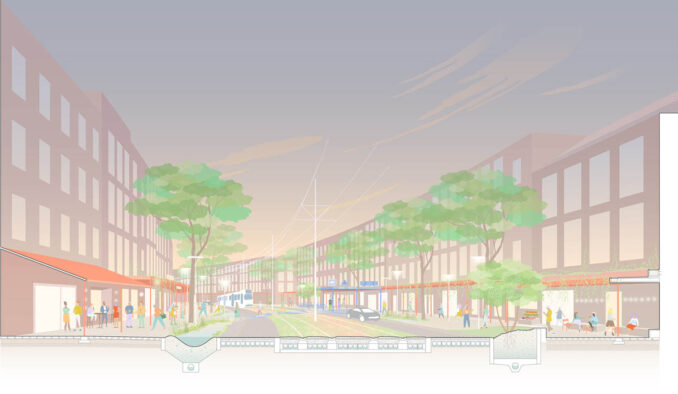
Towards A Healthy City By Foot
Location: The Netherlands
Landscape Architect: Felixx Landscape Architects & Planners
Felixx Team: Michiel van Driessche, Marnix Vink, Deborah Lambert, Eduardo Marin Salinas, Elan Redekop van der Meulen, Cherk Ga Leung
Stipo Team: Sander van der Ham (City Psychologist & Advisor)
Client: College of Government Advisors
Image Credits: Felixx Landscape Architects & Planners



